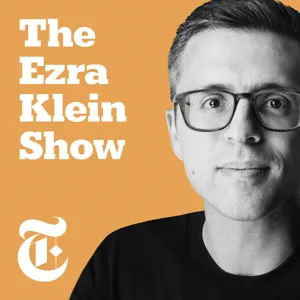Podcast Summary
Building stronger community connections: Appreciating human connections is crucial, whether through volunteering or recognizing the uniqueness of our own hearts, despite the future's technological advancements.
Building meaningful connections within your community can bring both social benefits and preparedness for unexpected events. Neighbor to Neighbor, a California volunteer's network, emphasizes the importance of relying on the people around us to create stronger bonds and be there for each other. Meanwhile, in a more metaphorical sense, the poem "In the Desert" by Stephen Crane encourages us to appreciate the bitterness and uniqueness of our own hearts, just as we would on Valentine's Day. The future will likely be shaped by artificial intelligence, as discussed on the Technically Speaking podcast, but no matter what the future holds, the value of human connections remains essential.
Heart removal scenes in horror movies: Heart removal scenes are a common trope in horror movies, symbolizing power and quickness of a supernatural being
The heart, both literally and metaphorically, holds significant importance in various aspects of life and popular culture. In the biological sense, it's the center of our circulatory system. Symbolically, it represents love and passion. In the realm of entertainment, particularly horror movies, heart removal scenes have been a common trope. Movies like "Lorelei's Grass," "Horror Rises from the Tomb," and "Return of the Blind Dead" are famous for their heart removal scenes. In the 1992 game "Mortal Kombat," and films like "Indiana Jones and the Temple of Doom," and "Indiana Jones and the Last Crusade," heart rips serve as a gory and memorable plot point. Characters like Jason Voorhees and the Leprechaun have also been known to rip out hearts. These scenes, often accompanied by sound effects, are relatively easy to execute in film. Other examples include "Valentine's Day," "Prophecy films," "Dumb and Dumber," and "Rambo Last Blood." The heart rip scene is a staple of horror movies, often used to showcase the power and quickness of a supernatural being.
Heart removals in history and culture: Heart removals have held symbolic significance in various belief systems and popular culture, highlighting the heart's importance in both physical and spiritual realms.
Heart removals have held significant meaning in various supernatural understandings of the human body and the cosmos throughout history. A notable example can be found in the ancient Egyptian belief system, where the heart was considered the organ of the soul and was weighed against a feather of Ma'at, the goddess of truth, to determine one's fate in the afterlife. This symbolism highlights the importance of the heart in both physical and spiritual realms. Another example comes from popular culture, such as the "Terminator" films, where the manual heart removal serves as a signature move for an unarmed terminator. This portrayal emphasizes the idea of the heart as a vital and vulnerable organ. Overall, heart removals have been a recurring theme in various supernatural and cultural contexts, highlighting the significance of the heart in both life and death.
Fast-acting allergy relief and ancient Egyptian heart beliefs: Astepro is a quick-relief allergy spray, while ancient Egyptians valued the heart for its role in thought, feeling, and consciousness.
Astepro is a fast-acting, steroid-free nasal allergy spray providing full prescription strength relief from nasal congestion, runny and itchy nose, and sneezing within 30 minutes. Unlike other allergy sprays, it's the fastest 24-hour over-the-counter option, making it a go-to solution for those seeking quick relief. Additionally, ancient Egyptians held the heart in high regard, viewing it as the organ of thought, feeling, and consciousness. Contrary to popular belief, the brain was not always removed during mummification, and the heart was often left in the chest. A specific mummy case from a 2014 study in the Journal of Mummy Studies contradicts the generalization that the brain was always removed during mummification. Overall, Astepro offers fast-acting allergy relief, while ancient Egyptian beliefs highlight the significance of the heart in both physical and spiritual realms.
Ancient Egyptian mummies had their hearts removed and replaced: New discoveries reveal that some ancient Egyptian mummies had their hearts removed and replaced with plaques or other objects, challenging our understanding of their mummification practices
Ancient Egyptian mummification practices were more complex than previously assumed. Contrary to the common belief that the heart was always left in place, some mummies, like the one discussed in the article, had their hearts removed and replaced with plaques or other objects. The reasons for this practice are unclear, but it may have been related to the embalming process or religious beliefs. For instance, the plaques might have been intended as healing symbols or replacements for the missing heart. The exact fate of the removed hearts is also unknown, with some assumptions suggesting they were placed in canopic jars. Overall, this discovery challenges our understanding of ancient Egyptian mummification practices and highlights the importance of ongoing research in this field.
Mummification practices and heart retention in ancient Egypt: Classical descriptions of universal heart retention or replacement during Egyptian mummification are not supported by modern research. In fact, only a minority of mummies had their hearts intact, while most had them removed.
The common assumptions about the treatment of the heart during Egyptian mummification, as described in classical texts, are not based on modern empirical research. Instead, these accounts are largely derived from Greek and Roman texts, with only a few direct Egyptian accounts available. The authors of the presentation examined the disposition of hearts in mummies and found that heart retention was not as common as previously thought. In fact, only 21 of 80 individuals had their hearts intact, and the majority had their hearts removed. This contrasts with the stereotype of universal heart retention or replacement. The authors conclude that these classical descriptions should be viewed as possible snapshots of practices from specific workshops rather than universal or even common practices across time and space. It's important to remember that beliefs and practices regarding mummification and the afterlife were complex and changed over time, making it difficult to summarize them in a simplistic way.
Ancient Egyptian social class and mummification: During ancient Egyptian times, mummification was a status symbol, with the elite receiving superior treatment to ensure a better afterlife
During ancient Egyptian times, there seems to have been a correlation between social class and the preservation of hearts during mummification. Previously, mummification was an exclusive right for the elite, and as it became more democratized, commoners were not given the same treatment. This could have been a deliberate choice to create a tiered system of mummification, ensuring a superior afterlife for the elite. However, the reasoning behind this is not definitively known. This discovery sheds light on the societal structures of the time and the efforts made to maintain power and status, even in the afterlife.
Mayan Sacrifices: Transparency in Wireless vs. Transdiaphragmatic Heart Removal: Mayans performed heart sacrifices for religious purposes using a quicker, more violent method called transdiaphragmatic approach, while Visible offers affordable wireless plans with clear terms and transparency
Transparency is a key aspect of the wireless company Visible, offering affordable wireless plans with clear terms. Meanwhile, in ancient times, the Mayans performed ritual human sacrifices involving heart removal. Contrary to previous theories, Tesla and Cucina's research suggests the Mayans carried out this procedure through a transdiaphragmatic approach, making it quicker and more violent than a surgical operation. Sacrificial victims, often enslaved people, had their hearts removed for religious purposes, and their blood was used to anoint divine icons or structures. The significance of these heart removals in the Mayan and Aztec cultures is better understood than the Egyptian example, where the removal or non-removal of the heart held different meanings.
Ancient beliefs about the heart as a connection to the divine: In ancient cultures, the heart was seen as more than just an organ, representing emotional and spiritual connections to the divine through various beliefs and practices, including heart sacrifices.
In various ancient cultures, including the Mayans and Egyptians, the heart was believed to be a vital offering to the gods, representing a symbolic and metaphorical connection to the divine. Sacrifices, often involving heart removal, were seen as acts of obligation, reciprocation, and reenactment, with the heart being the center of thought and being for the people performing the rituals. The techniques used for heart removal varied, with under the rib being the most common. Among the contemporary Mayan people, the Saadol Maya, there is an intriguing belief that the heart is an internal being that makes commands and must be obeyed, representing a separation between the heart and the conscious mind. These beliefs reflect the complex and multifaceted understanding of the heart in ancient cultures, going beyond its role as a mere organ and symbolizing emotional and spiritual connections.
The heart's role in brain function: The heart and brain are interconnected, with the heart's physical state influencing the brain's thoughts and emotions, and the heart's role being crucial for effective brain function.
The heart and brain are interconnected in ways that go beyond the literal, with the heart playing a crucial role in the brain's function. This connection is observable in the way our physical state affects our thoughts and emotions, from the mundane (hunger or excitement) to the subtle and complex (gut microbiome and brain function). The heart's role is essential for the brain to do its job effectively, whether through a natural heart or an artificial one. This interconnectedness challenges the common perception of the heart as just a physical organ and the brain as the center of thought and emotion. This interconnectedness is a fascinating area of exploration, with implications for our understanding of the human body and mind.
The Importance of a Good Cry: Crying is a natural response to emotions, and expressing them can lead to comfort and connection through sharing stories and experiences.
It's okay to cry and even beneficial to have a good cry. Ravi de Blukha, the host of the podcast "A Really Good Cry," emphasizes the importance of expressing emotions and allows listeners to do so through his podcast. By listening to others' stories and sharing our own, we can find comfort and connection. It's not about wallowing in sadness, but rather acknowledging and processing emotions in a healthy way. So, next time you feel the need to cry, give it a try and make it a really good one. You can listen to "A Really Good Cry" on the Iheartradio app, Apple Podcasts, or wherever you get your podcasts.





